Expert Scorpion Control – Safe & Effective Solutions
Scorpions are arachnid creatures known for their distinctive appearance, characterized by their elongated bodies, segmented tails that end in a venomous stinger, and a pair of formidable pincers. These ancient arthropods have been around for millions of years and are found in various terrestrial habitats worldwide, except for Antarctica. Scorpions come in a wide range of sizes, with the smallest species measuring just a few centimeters, while the largest can exceed 20 centimeters in length. They are primarily nocturnal predators, using their stingers to inject venom into prey such as insects and small vertebrates, paralyzing or killing them before consumption. While some scorpion species possess venom potent enough to harm humans, most are not deadly, and fatalities from scorpion stings are rare. They play vital roles in ecosystems as both predators and prey and have adapted to diverse environments, showcasing their resilience and intriguing biology.
The different species of scorpions
The most common species of scorpions can vary by region, but some of the most widespread and frequently encountered scorpion species around the world include:
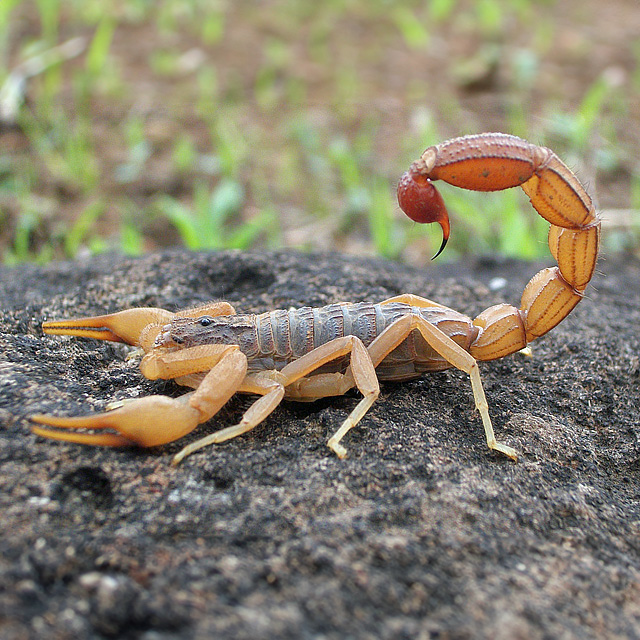
Hottentotta tamulus
Also known as the Indian red scorpion, it is one of the most venomous scorpions and is found in South Asia.
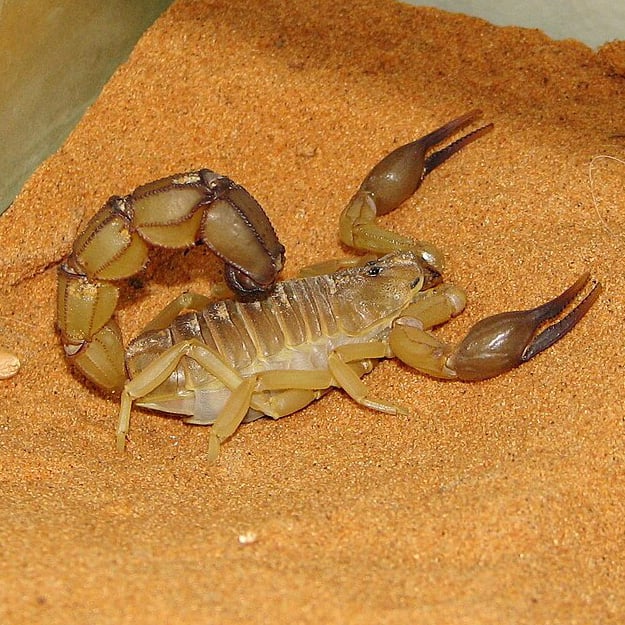
Androctonus spp.
A genus of scorpions known as the fat-tailed scorpions, found in North Africa, the Middle East, and parts of Asia. They are also highly venomous.
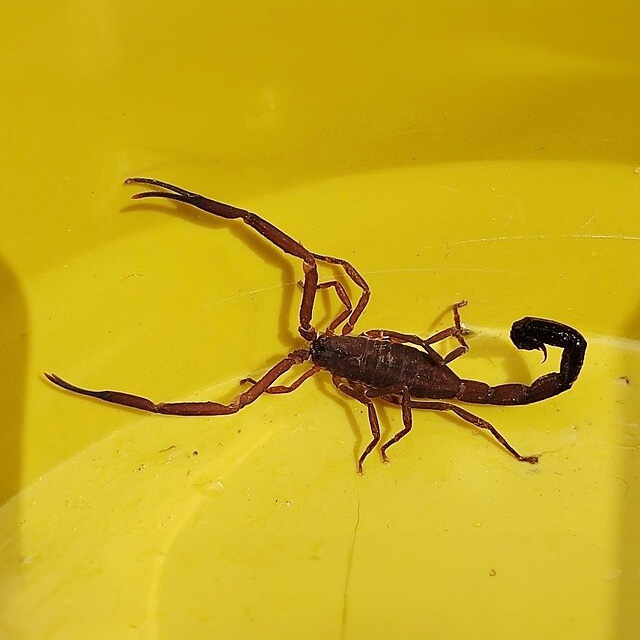
Tityus spp.
Found in Central and South America, these scorpions are responsible for many scorpion stings in the region.
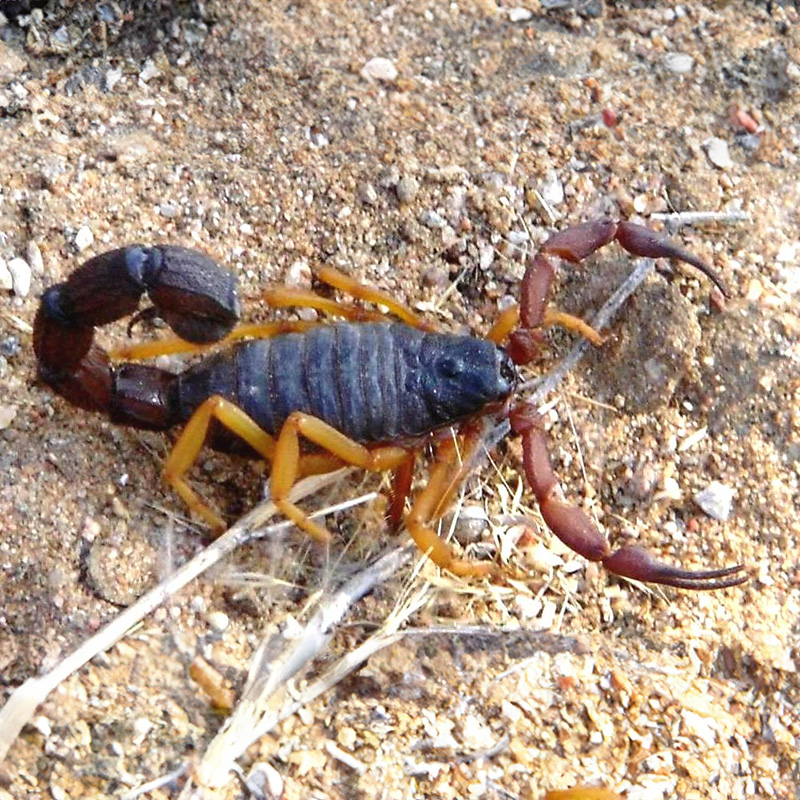
Parabuthus spp.
A genus of scorpions known as thick-tailed scorpions, found in Africa and the Middle East. Some species within this genus are highly venomous.
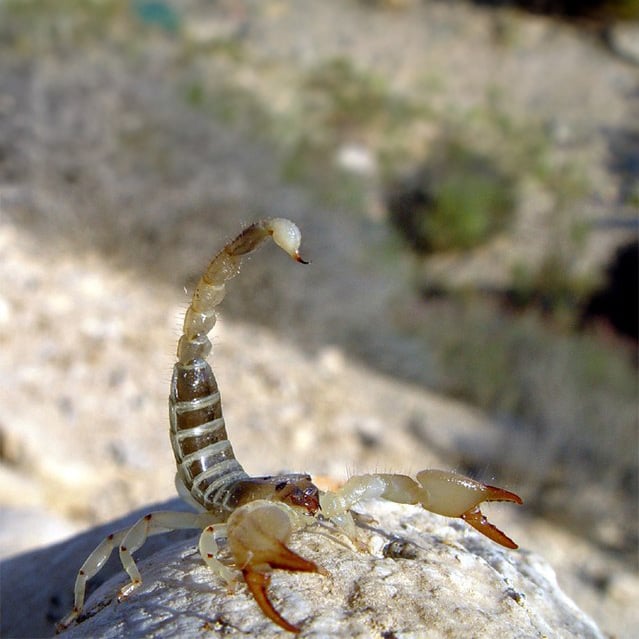
Scorpio spp.
This genus includes several species found in Europe, Asia, and Africa. They are typically not as venomous as some other species.

Centruroides spp.
These scorpions are commonly found in the Americas, including the United States, Mexico, and parts of South America.
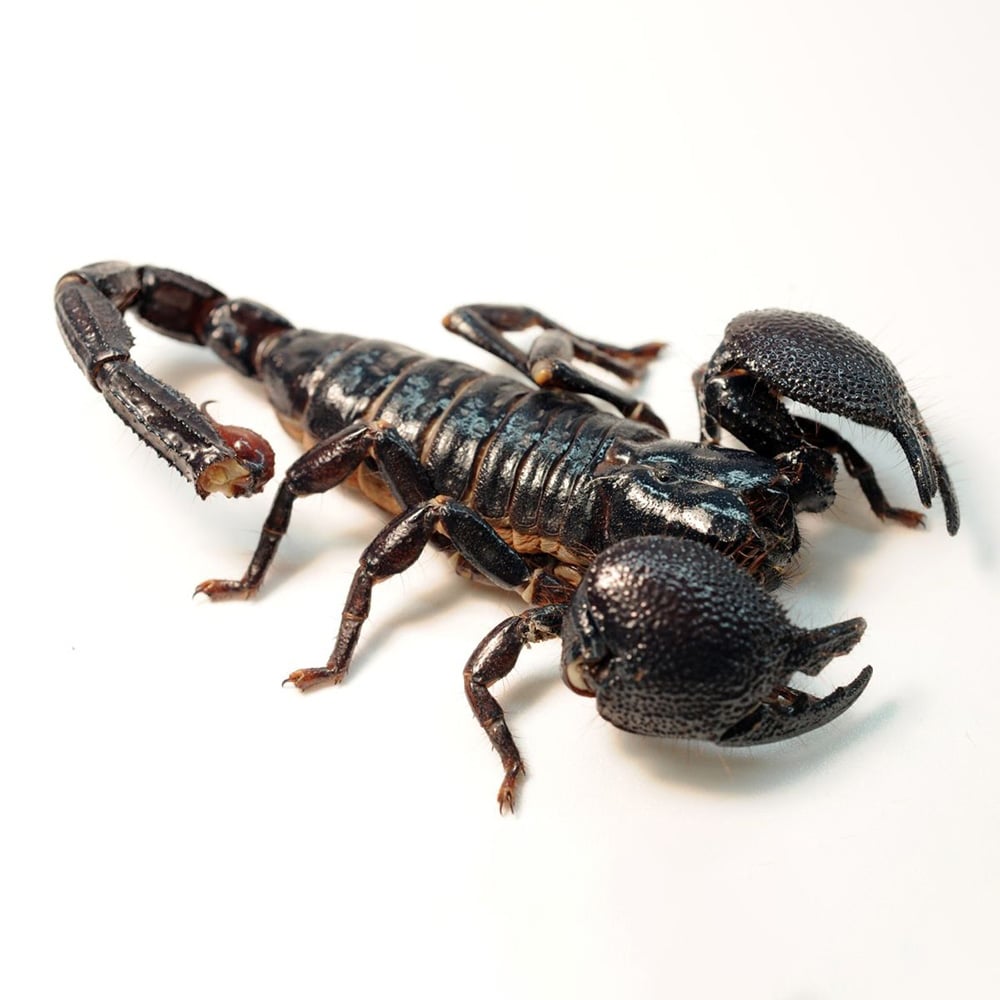
Pandinus spp.
Giant forest scorpions are native to Africa and are known for their large size and relatively mild venom.
It’s important to note that the prevalence of scorpion species can vary greatly by location, and there are many more species distributed around the world, with new discoveries and taxonomy updates occurring periodically. While some scorpions are venomous and potentially dangerous, the majority are harmless to humans and play essential roles in their ecosystems as predators of insects and other small organisms.
Scorpions are ancient arachnids, with fossil records dating back over 430 million years, making them one of the oldest land-dwelling creatures.
The life cycle of scorpions
The life cycle of scorpions is a fascinating journey that takes these arachnids through several distinct stages. Understanding this life cycle provides valuable insights into their development and behavior.

Birth
Scorpion life begins when a mother scorpion gives birth to live offspring. Unlike many other arachnids, scorpions do not lay eggs. Instead, they give birth to a brood of tiny scorpions, known as scorplings, which are usually pale and soft initially.
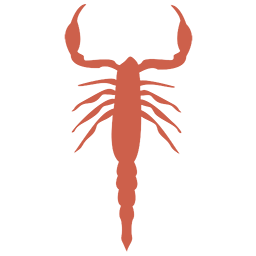
Molting
As scorplings grow, they undergo a series of molts to shed their exoskeletons and develop their hard exoskeletons. Molting is a vulnerable time for scorpions as they are soft and defenseless until their new exoskeleton hardens.

Maturity
Upon reaching maturity, scorpions are ready to reproduce. They often engage in intricate courtship rituals that vary among species, including dances and vibrations to attract potential mates.

Hunting and Predation
Throughout their lives, scorpions are skilled predators, using their powerful pincers to capture prey and their venomous stingers to immobilize it. They primarily feed on insects and other small arthropods.

Maternal Care
The mother scorpion exhibits remarkable maternal care, carrying her scorplings on her back until their first molt. During this period, she provides protection and sometimes feeds them by regurgitating pre-digested food.

Growth
Scorpions continue to grow and molt throughout their lives, typically molting several times per year in their early years. Growth rates and lifespans vary among species, with some living for several years and others for several decades.

Reproduction
After successful courtship, mating takes place, and the female stores sperm for later use. She can produce multiple broods from a single mating.

Longevity
Scorpions are known for their relatively long lifespans compared to many other arachnids, with some species living up to 25 years or more in captivity.
Understanding the life cycle of scorpions sheds light on their remarkable adaptation strategies and behaviors, making them a subject of intrigue for researchers and enthusiasts alike. These resilient arachnids play essential roles in maintaining the balance of ecosystems by controlling insect populations and serving as both predator and prey in their habitats.
Scorpions give birth to live offspring. The mother carries the young on her back until they can fend for themselves, which is an unusual parenting behavior in the arachnid world.
The seasons most conducive to scorpions
Scorpions are creatures whose activity and behavior can be influenced by seasonal changes in their environment. Knowing the seasons most conducive to scorpions can help individuals take precautions when living in or visiting scorpion-prone areas.

Spring
Springtime often marks the beginning of increased scorpion activity. As temperatures rise, scorpions become more active after their winter slowdown. They may venture out in search of food and mates. This season can see a higher incidence of scorpion sightings in some regions.

Fall
In the fall, scorpions continue their activities, but as temperatures start to drop, their metabolism slows down. They may become less active as they prepare for the upcoming winter. Fall can still see scorpion encounters, especially early in the season.
Summer
Summer is typically the peak season for scorpions in many areas. The warm weather and longer daylight hours encourage scorpions to be active at night when they hunt for prey. This is also the mating season for many scorpion species, leading to increased sightings as they engage in courtship and reproduction.
Winter
Winter is generally the least conducive season for scorpions. Colder temperatures cause scorpions to become less active, and they often seek shelter to avoid freezing. They may hibernate or enter a state of torpor during the coldest months, reducing their presence and interactions with humans.
It’s important to note that the specific seasons conducive to scorpions can vary by region and climate. In warmer climates, scorpions may remain active year-round, while in colder regions, their activity may be limited to the warmer months. Additionally, factors such as habitat, moisture levels, and food availability can influence scorpion activity throughout the year. To minimize encounters with scorpions, especially in areas where they are venomous, individuals should exercise caution and take preventive measures, such as sealing cracks and crevices in homes and wearing appropriate footwear when outdoors during peak scorpion seasons.
Scorpions thrive in warm and arid environments, including deserts and semi-arid regions. They are most active during the night and hide in cool, dark places during the day.
Where do scorpions come from, their habitat
Scorpions are arachnids with a rich history that spans millions of years, and they can be found in a diverse range of habitats around the world. Understanding their natural habitats provides valuable insights into where scorpions come from and how they have adapted to different environments.

Deserts
Scorpions are perhaps most commonly associated with desert regions, where they have evolved remarkable adaptations to thrive in harsh, arid conditions. Desert species are equipped with tough exoskeletons to minimize water loss, and they often hide during the day to avoid extreme heat, emerging at night to hunt for prey.

Forests
Some scorpion species have adapted to forested environments, both tropical and temperate. They can be found under logs, leaf litter, and rocks, using their cryptic coloring to blend in with the forest floor. These species often prey on insects and small arthropods.

Mountains
Scorpions can be found at high altitudes in mountainous regions. Here, they navigate rocky terrain and cooler temperatures, often seeking refuge in rock crevices or burrows to escape extreme cold.

Coastal Areas
Coastal regions can also be home to scorpions, especially in dune systems and rocky shores. These species often have adaptations to deal with salt spray and other coastal conditions.

Grasslands and Savannas
Scorpions are also found in grasslands and savannas, where they inhabit burrows or crevices. These open landscapes provide ample opportunities for hunting and reproduction, although they must still contend with temperature fluctuations.

Caves
Scorpions have ventured into cave systems, where they have adapted to subterranean life. These cave-dwelling scorpions are often pale and have elongated appendages, as they do not require the same level of armor or coloration for protection or camouflage.

Tropical Rainforests
In tropical rainforests, scorpions occupy the diverse microhabitats offered by this environment. They are particularly diverse in terms of species in these lush and humid regions.

Urban and Human-Altered Environments
Scorpions are known to adapt to urban and human-altered environments, such as cities and agricultural areas. They can find shelter in buildings, debris, and gardens, sometimes coming into contact with humans.
Scorpions are highly adaptable creatures, and their distribution across such a wide range of habitats underscores their resilience. They have evolved to cope with different ecological niches, and their ability to thrive in diverse environments is a testament to their survival skills. While scorpions can be found in a variety of locations, it’s important to remember that not all scorpion species are dangerous to humans, and many play crucial roles in controlling insect populations in their respective ecosystems.
Scorpions play a beneficial role in their ecosystems by helping to control insect populations, which can help reduce the spread of diseases carried by insects.
What attracts scorpions into our homes
Understanding what attracts scorpions into homes is essential for effective prevention and management. Several factors can contribute to scorpions seeking shelter and entering residential spaces:
Shelter and Protection
Scorpions are nocturnal creatures that seek shelter during the day to avoid extreme temperatures and predators. Cracks, crevices, and gaps in the walls, foundations, and doorways of homes provide ideal hiding spots and protection from the elements.
Food Sources
Scorpions are opportunistic predators, primarily feeding on insects and other arthropods. Homes with a significant insect presence can attract scorpions looking for prey.
Open Doors and Windows
Unsealed doors and windows or doors left open can provide easy access for scorpions to enter homes. They can crawl through small openings and gaps.
Climate Events
Extreme weather events like heavy rain, flooding, or drought can disrupt scorpions’ natural habitats, prompting them to seek shelter indoors.
Coolness
During hot and dry seasons, scorpions are attracted to cooler and more humid environments. Homes with air conditioning or adequate insulation can be appealing to scorpions looking for relief from the heat.
Outdoor Lighting
Scorpions are photophobic, meaning they are sensitive to light. Outdoor lighting, especially bright or ultraviolet lights, can attract insects, which in turn attract scorpions seeking an easy meal.
Attractants Inside
Food crumbs, spilled liquids, and open food containers can attract insects, which in turn attract scorpions looking for a meal. Keeping a clean and pest-free home reduces potential prey for scorpions.
Moisture
Scorpions are susceptible to desiccation (drying out), so they are drawn to areas with moisture. Leaking pipes, condensation, or high humidity levels can create favorable conditions for scorpions inside homes.
Landscaping
Scorpions may use outdoor landscaping features like rocks, woodpiles, and dense vegetation as hiding spots during the day. These features near the home can serve as staging areas for scorpions to enter the house.
Pets
Scorpions are attracted to the warmth generated by pets, such as cats and dogs, as well as their food and water dishes. This can lead to scorpions being drawn indoors if pet bowls are left outside or near entry points.
To reduce the likelihood of scorpions entering your home, it’s essential to address these attractants and take preventive measures, such as sealing cracks, maintaining a dry environment, and keeping outdoor lighting to a minimum. Regular inspections and pest control efforts can also help keep scorpions and their potential prey at bay.
Scorpions often enter homes seeking shelter from extreme temperatures or to find prey. They can crawl through small cracks, gaps, and openings to gain access to buildings.
Signs that you have a scorpions’ infestation
Detecting signs of a scorpion infestation early is crucial for effective pest control and preventing potential stings or harm to residents. Here are common signs that you may have a scorpion infestation in your home:
Sightings
The most obvious sign is actually seeing scorpions inside your home. These arachnids are nocturnal, so they are most active at night. Spotting scorpions during the day can indicate a larger infestation.
Dead Insects
Since scorpions primarily feed on insects, finding an unusually high number of dead insects inside your home could indicate their presence.
Stinger Marks
If you or anyone in your household has been stung by a scorpion, it’s a clear sign of their presence. Scorpion stings can be painful and potentially dangerous, particularly if the scorpion is venomous.
Outdoor Sightings
Sometimes, scorpions are first noticed outdoors around your property, such as in gardens, near doorways, or on walls. This can be an early warning sign of a potential infestation inside.
Shed Exoskeletons
Like other arachnids, scorpions molt as they grow. Finding discarded exoskeletons in and around your home can be a sign of scorpions.
Hiding Spots
Scorpions seek shelter during the day and often hide in cracks, crevices, and dark corners of your home. Check these areas for scorpion activity.
Pets' Behavior
Dogs and cats can sense the presence of scorpions. If your pets are acting unusually agitated or focused on a specific area, it could be because they’ve detected scorpions.
Scorpion Droppings
Scorpions leave behind small, dark droppings that resemble small pellets. These may accumulate in areas where they hide or hunt.
Nighttime Noises
Scorpions are not silent creatures. You might hear rustling or clicking sounds at night as they move around.
Prey Species
If you see an increase in other insects like crickets, cockroaches, or spiders inside your home, it may be because scorpions are preying on them.
It’s essential to address a scorpion infestation promptly to prevent further population growth and to minimize the risk of stings, especially if the species in your area are venomous. Professional pest control services can help identify the extent of the infestation, locate hiding spots, and implement effective control measures to safely remove scorpions from your home and property.
Scorpions are natural predators of common household pests like cockroaches, crickets, and spiders. Their presence may indicate an underlying pest problem in your home.
Rooms where scorpions hide
Scorpions are skilled at finding concealed hiding spots, especially during daylight hours when they seek shelter from light and heat. Knowing which rooms and areas scorpions are more likely to hide in can help homeowners take precautionary measures and conduct inspections. Here are rooms and places where scorpions often hide:

Bedrooms
Scorpions may hide under the bed, in the folds of curtains, or in clothing left on the floor. The darkness and quiet in bedrooms make them attractive hiding spots.
Basements
Scorpions are often found in basements, where they can take shelter in cracks in walls, boxes, or piles of stored items.
Living Rooms
In living areas, they can hide in furniture, such as sofas, chairs, or cushions, as well as in dark corners or crevices in the walls.
Outdoor Areas
Scorpions may enter homes from the outside, so it’s essential to inspect entry points like doors and windowsills, especially if the home is in a scorpion-prone area.
Bathrooms
In bathrooms, scorpions might seek refuge in damp areas like under sinks, behind toilets, or within cabinets. Leaking pipes or moisture can attract them.
Garages
Garages provide numerous hiding spots for scorpions, including behind clutter, in cardboard boxes, or among tools and equipment.
Laundry Rooms
Scorpions are attracted to laundry rooms because of the moisture from washing machines and sinks. They may hide near these areas.
Cracks and Crevices
Scorpions are experts at squeezing into tight spaces. They can hide in cracks in walls, ceilings, and floors, as well as under loose wallpaper or tiles.
Closets
Closets are filled with dark corners and hidden spaces, making them suitable hiding spots for scorpions. They may be found among stored clothing or shoes.
Kitchens
Scorpions may hide in the kitchen, especially if there is a source of moisture or accessible food. Check under sinks and behind appliances.
Utility Rooms
Rooms with water heaters or boilers can attract scorpions due to the warmth and potential moisture. Check around these appliances.
Clutter and Debris
Scorpions are more likely to hide in cluttered areas with plenty of cover. Reducing clutter and keeping storage areas organized can help minimize hiding spots.
Remember that scorpions are primarily nocturnal, so they tend to be more active at night. Conducting regular inspections in these areas, using a blacklight to spot them (as they fluoresce under UV light), and taking preventive measures such as sealing cracks and gaps can help reduce the likelihood of scorpions hiding in your home. If you suspect a scorpion infestation, consider consulting a professional pest control service for effective removal and prevention strategies.
To prevent scorpion infestations, seal any cracks or gaps in your home, keep the area around your home clear of debris, and minimize outdoor lighting, as it can attract insects that, in turn, attract scorpions.
The dangers and damages that scorpions can cause
Scorpions can pose various dangers and potential damages, primarily through their venomous stings. While most scorpion species are not deadly to humans, certain factors, such as the type of scorpion, the individual’s health, and the location of the sting, can influence the severity of the consequences. Here are the potential dangers and damages associated with scorpions:
Painful Stings
Scorpion stings are typically painful and can cause immediate discomfort. The intensity of pain can vary, with some stings feeling like a sharp, burning sensation.
Venomous Species
Certain scorpion species, such as the Arizona bark scorpion in the United States and the Indian red scorpion in South Asia, are highly venomous. Their stings can lead to more severe symptoms, including muscle twitching, convulsions, and respiratory distress.
Potentially Fatal
Although fatalities from scorpion stings are rare, they can occur, particularly in vulnerable populations like young children, the elderly, or individuals with compromised immune systems.
Psychological Impact
Scorpion stings can lead to psychological distress, especially in cases of severe envenomation. Fear of future encounters with scorpions can also affect mental well-being.
Impact on Livestock
In some regions, scorpions can pose threats to livestock. Stings can lead to reduced milk production, weight loss, and sometimes death in animals.
Allergic Reactions
In some cases, individuals may experience allergic reactions to scorpion venom, leading to symptoms like swelling, itching, hives, and difficulty breathing. Severe allergic reactions, though rare, can be life-threatening.
Neurological Effects
Envenomation by venomous scorpions can affect the nervous system, leading to symptoms like muscle spasms, numbness, and difficulty swallowing. Severe stings can result in paralysis.
Secondary Infections
Scratching or touching the sting site can introduce bacteria, increasing the risk of secondary skin infections.
Economic Costs
Scorpion infestations can result in financial damages, including costs associated with pest control services, medical bills, and property repairs due to infestation damage.
Environmental Impact
Scorpions play essential roles in ecosystems as both predators and prey. Overuse of pesticides to control scorpions can disrupt the balance of local ecosystems.
While scorpions can indeed pose dangers and potential damages, it’s important to note that not all scorpion species are venomous or pose a significant risk to humans. Nonetheless, individuals living in scorpion-prone areas should take preventive measures to reduce the risk of stings, such as sealing entry points into homes, wearing protective clothing and footwear, and exercising caution when reaching into dark or concealed areas where scorpions may hide. In cases of scorpion stings, seeking medical attention promptly is essential, especially if severe symptoms develop.
Scorpions are equipped with venomous stingers located at the end of their tails. While most scorpion species’ venom is not lethal to humans, it can cause varying degrees of pain and discomfort.
How to get rid of scorpions / Available treatments
Getting rid of scorpions and managing infestations requires a combination of preventive measures, home remedies, and professional treatments. The approach you take may depend on the severity of the infestation and the type of scorpions in your area. Here are some ways to get rid of scorpions:
Preventive Measures
- Seal Entry Points: Thoroughly inspect your home for cracks, gaps, and openings in walls, doors, windows, and foundations. Seal these entry points to prevent scorpions from entering.
- Weatherstripping: Install weatherstripping on doors and windows to create a tight seal.
- Screen Vents: Install fine mesh screens on vents and openings to prevent scorpions from entering through them.
- Remove Clutter: Eliminate clutter inside and outside your home, as it provides hiding spots for scorpions.
- Trim Vegetation: Trim bushes, trees, and grass near your home, as overgrown vegetation can serve as hiding places for scorpions.
- Outdoor Lighting: Use yellow or sodium vapor lights instead of bright white lights, as scorpions are less attracted to these.
Scorpion-Proofing
- Scorpion-Resistant Products: Consider using scorpion-resistant products, such as scorpion-proof door sweeps, to prevent entry.
- Scorpion-Proofing Landscaping: Design your landscaping to be less hospitable to scorpions by using gravel instead of mulch and reducing hiding spots.
Removal by Hand
- Use Tongs: If you encounter a scorpion inside your home, use long-handled tongs or a jar to capture and relocate it safely outside. Wear protective clothing and gloves.
Natural Remedies
- Diatomaceous Earth: Sprinkle food-grade diatomaceous earth around entry points and in areas where scorpions are likely to hide. This substance can dehydrate and kill scorpions.
- Sticky Traps: Place sticky traps in areas where scorpions are active, such as corners, near entry points, or in dark hiding spots.
Professional Pest Control
- Extermination Services: Contact a professional pest control service with experience in dealing with scorpions. They can assess the infestation and implement appropriate treatments.
- Pesticides: Pest control professionals may use pesticides labeled for scorpion control. These treatments are best left to experts to ensure safety and effectiveness.
DIY Approaches
- Home Barrier Treatments: Some homeowners apply residual insecticides around the perimeter of their homes as a barrier to prevent scorpions from entering. Consult with a professional or read product labels carefully before attempting this.
Regular Inspections
- Stay Vigilant: Continuously monitor your property and home for signs of scorpions to address any new infestations promptly.
It’s important to note that while DIY methods and natural remedies may work for mild infestations, severe infestations or infestations by highly venomous scorpions should be handled by professionals. Additionally, it’s essential to prioritize safety when dealing with scorpions, as they can sting when threatened. If stung, seek medical attention if symptoms are severe or if you are unsure of the scorpion’s toxicity.
If a scorpion infestation occurs, it’s best to contact a pest control professional for safe and effective removal. DIY approaches can be dangerous due to the scorpions’ venomous stingers.
How to prevent scorpion infestations
Preventing scorpion infestations requires proactive measures to make your home and property less attractive to these arachnids. Here are steps you can take to prevent scorpions from infesting your living space:
Seal Entry Points
- Inspect your home for cracks, gaps, and openings in walls, doors, windows, and foundations. Seal these entry points with caulk, weatherstripping, or appropriate sealants.
Remove Outdoor Attractants
- Remove outdoor clutter, such as piles of firewood, rocks, or debris, where scorpions may hide.
- Store garbage bins away from the house and keep them tightly sealed.
Inspect and Seal Structures
- Check crawl spaces, attics, and basements for any openings or cracks that could allow scorpions to enter your home. Seal them securely.
Shake Out Clothing and Shoes
- Before putting on clothing or shoes that have been left outside or in storage, shake them out to ensure there are no scorpions hiding inside.
Keep Pets Safe
- Be cautious with outdoor pet food and water dishes. Scorpions may be attracted to them, especially at night. Empty and clean pet dishes before nightfall.
Install Screens and Barriers
- Install fine mesh screens on doors, windows, and vents to prevent scorpions from entering your home.
- Consider using door sweeps or thresholds that block gaps beneath doors.
Reduce Moisture
- Repair leaky pipes, faucets, and sprinkler systems to eliminate moisture sources that may attract scorpions.
- Ensure proper drainage to prevent water accumulation near your home.
Keep Entryways Closed
- Keep doors and windows closed or screened, especially during the evening when scorpions are most active.
Shake Out Bedding
- When camping or traveling, inspect bedding and camping gear for scorpions before use.
Maintain Landscaping
- Trim bushes, trees, and grass near your home regularly. Scorpions often use overgrown vegetation as hiding spots.
- Create a gravel barrier between your home’s foundation and any mulch or plants to reduce scorpion-friendly habitats.
Modify Outdoor Lighting
- Switch to yellow or sodium vapor lights for outdoor lighting, as these are less attractive to insects and, consequently, scorpions.
Pest Control Services
- Consider regular pest control services, especially if you live in an area prone to scorpions. Professionals can provide treatments that deter scorpions from your property.
Educate Yourself
- Learn about the types of scorpions in your region, their habits, and common hiding spots. This knowledge can help you be more vigilant.
By taking these preventive measures, you can significantly reduce the risk of scorpion infestations and create a less inviting environment for these arachnids around your home. Regular inspections and ongoing maintenance are key to long-term prevention.
Conclusion
In conclusion, scorpion infestations can present challenges and potential risks to homeowners and residents. These ancient arachnids, armed with venomous stingers, may seek shelter within human dwellings, posing threats to health and comfort. While not all scorpions are equally venomous, their presence can lead to painful stings and allergic reactions, especially in sensitive individuals. Preventing scorpion infestations requires a proactive approach, including sealing entry points, maintaining a tidy environment, and being vigilant about outdoor conditions. When infestations do occur, it is advisable to seek professional assistance for safe and effective removal. By understanding the behaviors and habitats of scorpions, individuals can take steps to mitigate the risks associated with these intriguing but potentially hazardous creatures.
